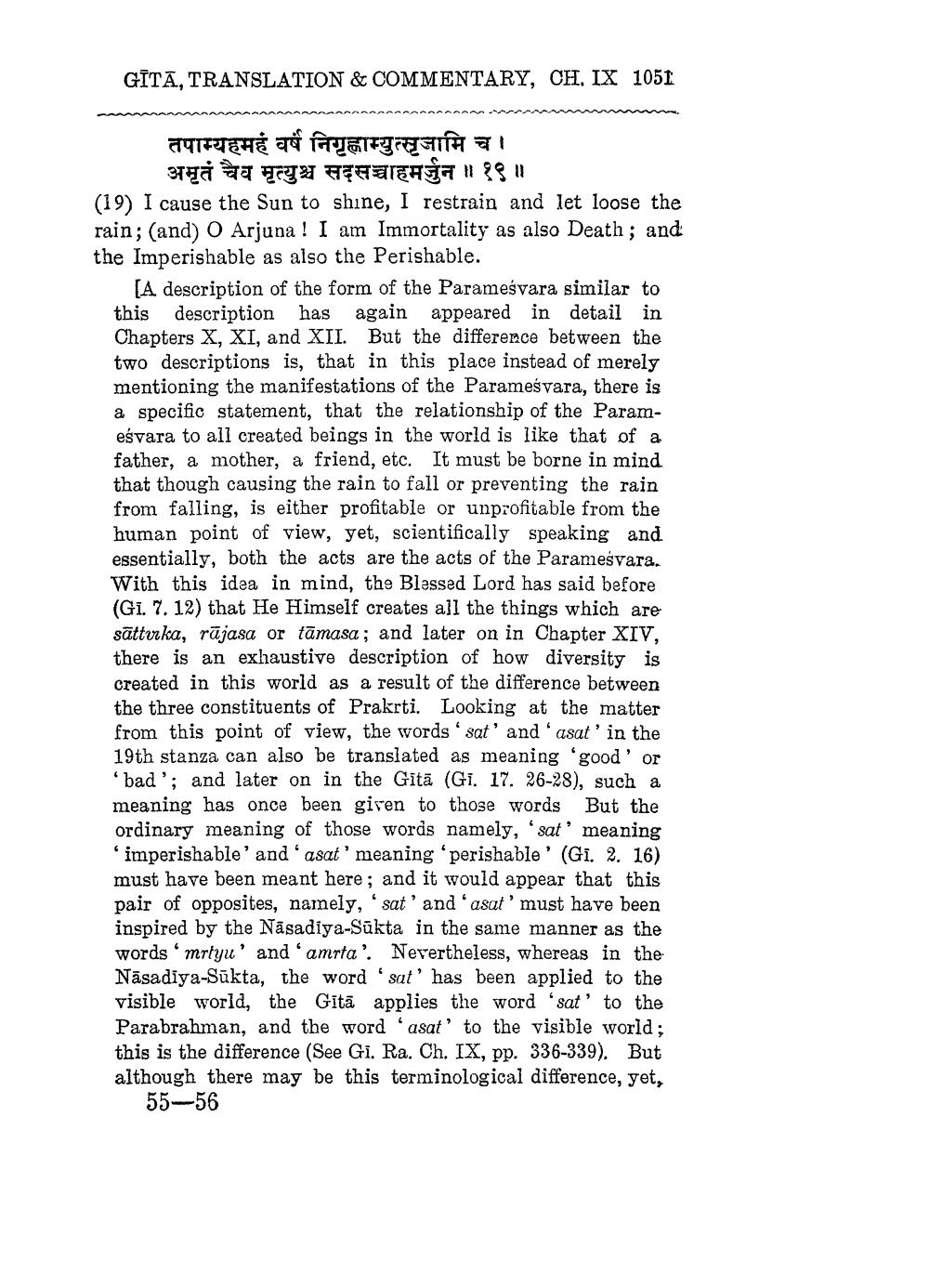________________
GĪTĀ, TRANSLATION & COMMENTARY, CH. IX 1051
w
तपाम्यहमहं वर्ष निगृह्णाम्युत्सृजामि च ।
अमृतं चैव मृत्युश्च सदसञ्चाहमर्जुन ॥ १९ ॥ (19) I cause the Sun to shine, I restrain and let loose the rain; (and) O Arjuna! I am Immortality as also Death; and the Imperishable as also the Perishable.
[A description of the form of the Parameśvara similar to this description has again appeared in detail in Chapters X, XI, and XII. But the difference between the two descriptions is, that in this place instead of merely mentioning the manifestations of the Parameśvara, there is a specific statement, that the relationship of the Parameśvara to all created beings in the world is like that of a father, a mother, a friend, etc. It must be borne in mind that though causing the rain to fall or preventing the rain from falling, is either profitable or unprofitable from the human point of view, yet, scientifically speaking and essentially, both the acts are the acts of the Parameśvara. With this idea in mind, the Blessed Lord has said before (Gi. 7. 12) that He Himself creates all the things which are sātturka, rājasa or tāmasa; and later on in Chapter XIV, there is an exhaustive description of how diversity is created in this world as a result of the difference between the three constituents of Prakrti. Looking at the matter from this point of view, the words ' sat' and 'asat' in the 19th stanza can also be translated as meaning 'good' or 'bad'; and later on in the Gītā (Gi. 17. 26-28), such a meaning has once been given to those words But the ordinary meaning of those words namely, 'sat' meaning
imperishable' and 'asat' meaning 'perishable' (Gi. 2. 16) must have been meant here, and it would appear that this pair of opposites, namely, 'sat' and 'asat' must have been inspired by the Nāsadiya-Sākta in the same manner as the words mrłyu' and 'amrta'. Nevertheless, whereas in the Nāsadiya-Sūkta, the word 'sat' has been applied to the visible world, the Gītā applies the word 'sat' to the Parabrahman, and the word 'asat' to the visible world; this is the difference (See Gi. Ra. Ch. IX, pp. 336-339). But although there may be this terminological difference, yet,
55-56




